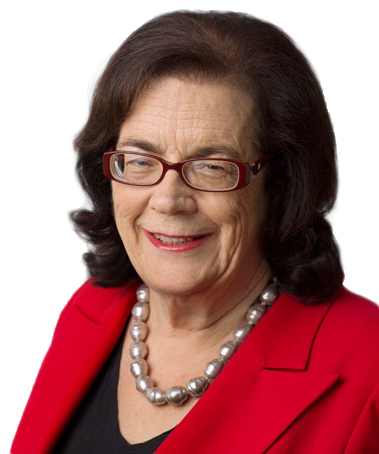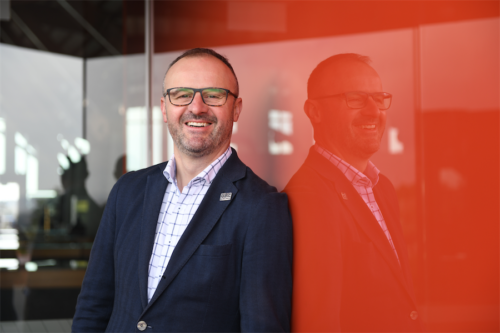AFTER the initial surge by Scott Morrison, Bill Shorten planted his feet more firmly in the campaign’s third week.

Favourable assessments of his performance in Monday night’s debate gave the opposition leader a confidence boost.
The previous day’s multi-billion handouts for child care and dental treatment for pensioners injected a sugar hit into his campaign, keeping Labor’s pitch squarely on voters’ cost-of-living pressures.
Shorten’s plan, also announced that day, for a Labor government to subsidise the wages of child care workers, while it might go over well in the community, was highly contentious policy, potentially taking him into trip-up territory.
Initially Shorten left the way open to extend this largesse to other workers (those in the aged care sector were the most obvious) but he quickly closed that down.
The serious policy headwinds buffeting Shorten have been coming on the issue that also plays well for Labor – climate change. The question kept being asked: what would the opposition’s 45 per cent emissions reduction target cost the economy, in growth, employment and the like?
There were always two ways for Shorten to confront this fundamental question. Produce Labor modelling to provide a detailed answer. Or declare it unanswerable, while asking the cost of doing nothing.
The first course would have been the instinctive way to go. But it would take Labor into a maze of contestable numbers.
Refusing to own any particular set of figures, which is what Labor has done – apart from passing nods to assessments that suit its case – is risky. But it keeps the issue in the sunny uplands of the debate, tapping into people’s general desire for action on climate.
For the government, the imperative has been to accept the widespread concern about climate change (anything else would be politically unthinkable) but exploit many people’s reluctance to pay too much personally to address it.
Morrison’s line is that something should be, and is being, done but it’s a choice between targets. “Do you have a reckless target, or a responsible target?” he asks.
So the government is heavily focused on any modelling. It is trying to pin big cost numbers to Labor’s target, most recently with this week’s release of a long-awaited report from economist Brian Fisher, who runs the consultancy BAEconomics (and was formerly head of the Australian Bureau of Agricultural and Resource Economics).
The Fisher report is critical of the cost of Labor’s policy. But the opposition dismisses it as lacking independence, and Shorten, in line with his broader tactic of refusing to get into the weeds, simply went into attack mode. “We will file this report under P for propaganda,” he said.
In these battles Labor benefits from the government’s energy policy vacuum and the fact minister Angus Taylor is a weak performer, seen only sporadically on the front line.
Polling done in April and released this week by the progressive think tank The Australia Institute showed while Labor had the edge on the climate-energy issue, there is still a high level of uncertainty about which side has the best policies.
On which party was better for reducing emissions, 40 per cent said Labor; 22 per cent the Coalition; 38 per cent didn’t know or were unsure.
A third (34 per cent) said Labor policies were better for lowering electricity prices; 29 per cent preferred the Coalition; 37 per cent didn’t know. A third (33 per cent) chose Labor as better for energy reliability; 30 per cent said the Coalition; 37 per cent didn’t know.
As the campaign passed the half-way point, the polls showed a tightening. Both Newspoll and Essential this week had the Coalition trailing 49-51 per cent, compared with 48-52 per cent previously.
The two sides continue to report the geographical lumpiness in this campaign. Labor is taking rather a beating in regional Queensland over the coal issue, where Shorten’s carefully-crafted formula on Adani (designed to say everything and nothing) apparently isn’t cutting it.
But to be able to win nationally the Coalition needs a primary vote well over 40 per cent: in Newspoll, it is on 38 per cent and in Essential, on 39 per cent.
And while Shorten has had more glitches than anticipated in this campaign, Morrison this week took some pain over his association, via the preference deal, with controversial businessman Clive Palmer.
Morrison also had a heap of trouble with candidates. Two Victorians had to be relegated to the scrap heap, for Islamophobic and homophobic comments respectively.
On Thursday, campaigning in Tasmania, he found himself too close for comfort to Jessica Whelan, candidate for Lyons, who’s accused of anti-Muslim online comments she claims were doctored. Morrison fell back on this dog-eating-homework defence, saying the alleged digital manipulation had been referred to the police. Nevertheless Whelan’s position looked precarious and her campaign badly skewered.
Shorten hasn’t been free of candidate problems, with Labor’s Luke Creasey, in the Greens seat of Melbourne, finding his offensive posts from some years ago appearing, and a Northern Territory Senate candidate having to resign on Monday.
In the first three days of pre-polling, which started Monday, about 375,000 voted, compared to 225,000 in 2016. This might be partly explained by an increasing awareness of the opportunity to vote early, but equally it may reflect many people’s desire to be done with this election.
Shorten’s Sunday announcements were timed for the start of pre-polling; Labor’s formal “launch” this Sunday will put out more voter bait.
Although we don’t yet have the timing, one highly important day for Labor will be when it issues its comprehensive costings, which will show a better surplus over the forward estimates than the Coalition’s budget. The opposition hopes this will help counter Morrison’s bid to own the economic management ground, on which he’s been getting traction.
The Coalition’s formal “launch” is not until Sunday week. That’s late in the campaign, although the start of the final week marks another critical point, where a major push is needed.
Morrison’s difficulty is that while negativity might have served him effectively in the campaign’s early days, even Liberal-leaning commentators are saying there’s not enough of the so-called vision thing for the next term.
But attempting to produce this now would carry its danger for Morrison: it would attract more scrutiny onto him, blunt some of the negative hits, and could be received cynically as an expedient gesture.
What an underdog should do in the final stages of a campaign is always vexed. John Howard in 2007 went on a spending spree, only to have Kevin Rudd gain points for not matching it.
As for Labor, as it contemplates the tightening it is banking on 2019 being like 2007, when sufficient voters had decided on a change well before the campaign’s last days.
Michelle Grattan is a professorial fellow at the University of Canberra. This article was originally published on The Conversation.
Who can be trusted?
In a world of spin and confusion, there’s never been a more important time to support independent journalism in Canberra.
If you trust our work online and want to enforce the power of independent voices, I invite you to make a small contribution.
Every dollar of support is invested back into our journalism to help keep citynews.com.au strong and free.
Thank you,
Ian Meikle, editor




Leave a Reply